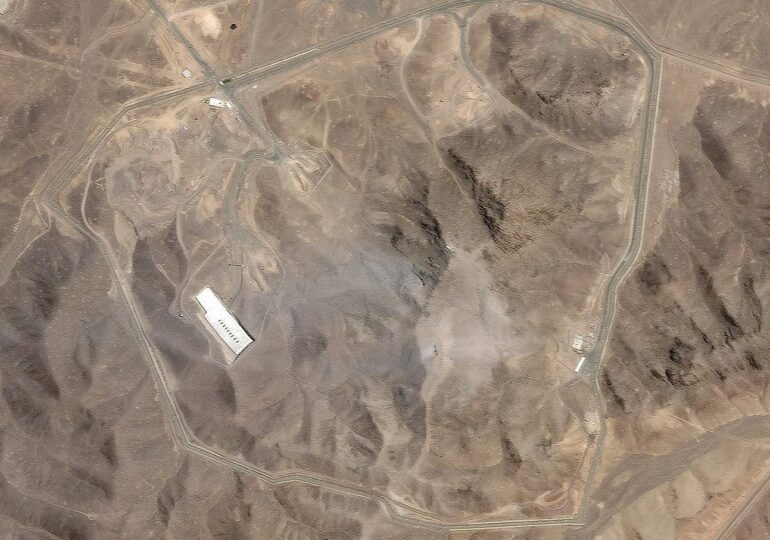It is possible that American attacks may have halted Iran’s ability to enrich the uranium needed to produce a viable nuclear weapon. But that does not equate to stopping its ability to produce a nuclear bomb.
We should wait for the situation to clarify before knowing if the American attacks on Iran were, as Donald Trump stated, „a spectacular military success.” And when bombs weighing over 13 tons each are launched, we need to wait for the dust to settle, and things will be clearer, as stated in an analysis published by Sky News.
If Trump's presentation of the American attacks proves to be correct, the destruction of Iranian nuclear installations may not mean the end of the Iranian nuclear threat, as mentioned by CNN.
Western military sources told the American television network that it is still too early to fully assess the damage.
Officials from the United Nations' nuclear watchdog agency, the IAEA, say they do not know where the nuclear material that Iran has already produced is located, including large quantities of enriched uranium-235.
The Iranian state media claims that the three nuclear sites attacked by the United States - Fordow, Natanz, and Isfahan - were "evacuated" beforehand, indicating the possibility that some or all of these materials may be stored elsewhere, possibly in a secret facility unknown to nuclear inspectors.
What we know so far
The Pentagon announced that the operation against Iran's three largest nuclear facilities involved 125 military aircraft, warships, and submarines, including the largest operational bombing raid by B2 bombers in history.
The B-2 aircraft dropped 14 of the most powerful American GBU-57 "bunker-buster" bombs on the Natanz uranium enrichment plant and the most sophisticated Iranian nuclear facility at Fordow. According to the Pentagon, this was the first time such weapons were used in a military operation.
The Fordow complex, buried deep in a mountain, was the only place that had not been previously affected by Israeli attacks in recent days.
The use of multiple GBU-57 bombs at Fordow is telling. Despite their size, it was known that using a single bomb would not be enough to penetrate over 80 meters of solid rock believed to house Iran's most sophisticated uranium enrichment technology deep within Fordow.
Satellite images reveal three visible holes at two different impact points on the mountain slope above the complex. The holes appear to be near what could have been ventilation shafts - possibly chosen to maximize damage from below and render the facility useless.
The use of multiple bombs in the same location was likely decided to allow each to penetrate further than the first before detonating.
The "Ingredients" of a Nuclear Bomb
If the nuclear facilities at Isfahan, Natanz, and Fordow were destroyed, as the US claims, or at least damaged, it would certainly halt Iran's ability to enrich the uranium needed to make a viable nuclear weapon.
But that is not the same as preventing Iran from making a nuclear bomb. For that, Tehran needs a few "ingredients":
- military-grade uranium;
- the technology required for shaping metals, explosives, and synchronization needed to trigger nuclear fission in a bomb;
- a mechanism for bomb delivery.
The targeted facilities of the American raid are dedicated to achieving the first objective - extracting natural uranium ore, which contains about 0.7% uranium-235 - the isotope necessary for nuclear fission - and concentrating it.
The centrifuges that have been talked about recently are the tools needed to enrich U-235 to the 90% purity required for a compact "implosion" core that can be launched by a missile.
And the truth is that Iranian centrifuges have been spinning for a long time, notes the source cited.
UN nuclear inspectors warned in May that Iran had at least 408 kg of "enriched" uranium at 60%.
Reaching this level represents 90% of the time and effort required to obtain U-235 with 90% purity. And the 400 kg mentioned by the UN would produce enough military-grade uranium to make nine nuclear weapons, according to inspectors' conclusions.
The Second Step
The second step towards a nuclear bomb is something Iran has been working on for two decades.
The precise shaping of metallic uranium and the creation of explosive charges designed to crush it correctly and reach the critical point, the spark of the chain reaction that releases terrifying energy in a nuclear explosion.
It is believed that in its recent bombing campaign, Israel targeted facilities where Iranian nuclear scientists were conducting some of this work.
However, unlike the industrial processes required for uranium enrichment, these subsequent stages can be carried out in laboratory-sized facilities. They are easier to package, move, and hide from prying eyes.
The Third Phase, the Most Complicated
Iran appears to have already transported enriched uranium from Fordow before the American attack, so we cannot be sure it has lost its ability to produce a bomb.
And although the attacks may have delayed logistics, they may have actually encouraged the threatened Iran to intensify its manufacturing capacity for nuclear warheads, if it has any left.
Finally, the third stage of building a nuclear bomb, namely manufacturing a more compact nuclear core based on implosion, is not easy. There are debates among experts about how advanced Iran is on this path.
But Tehran has other, less sophisticated nuclear options.
Even 60%-enriched uranium, of which it has plenty, can be brought to critical level in a much larger and more rudimentary nuclear device. However, it would not pose as great a threat to its enemies, as it would be too heavy to fit even on Iran's best long-range missiles. Nevertheless, it would elevate the Islamic country to nuclear power status.
T.D.

